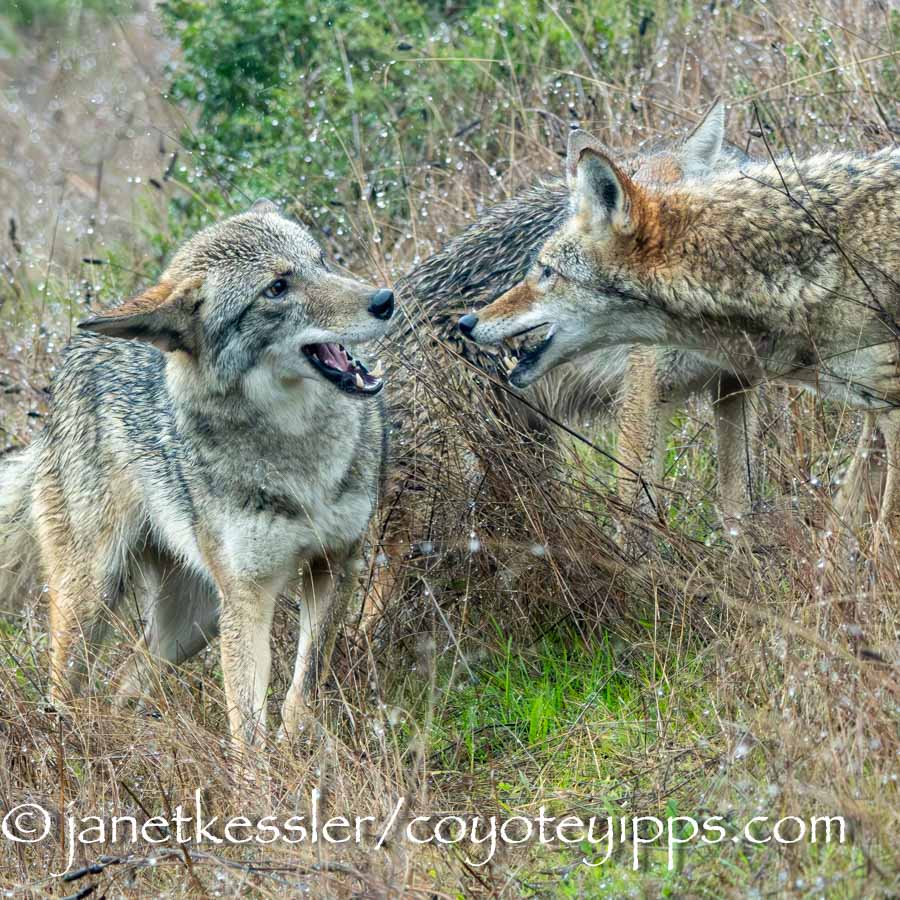
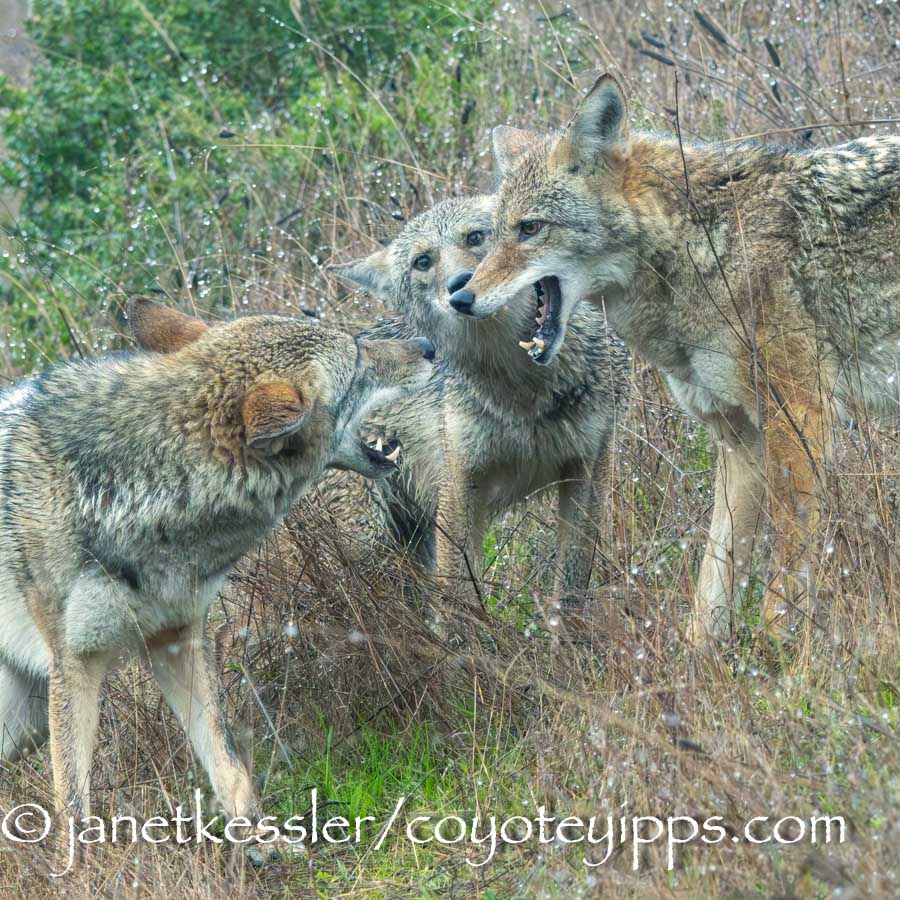
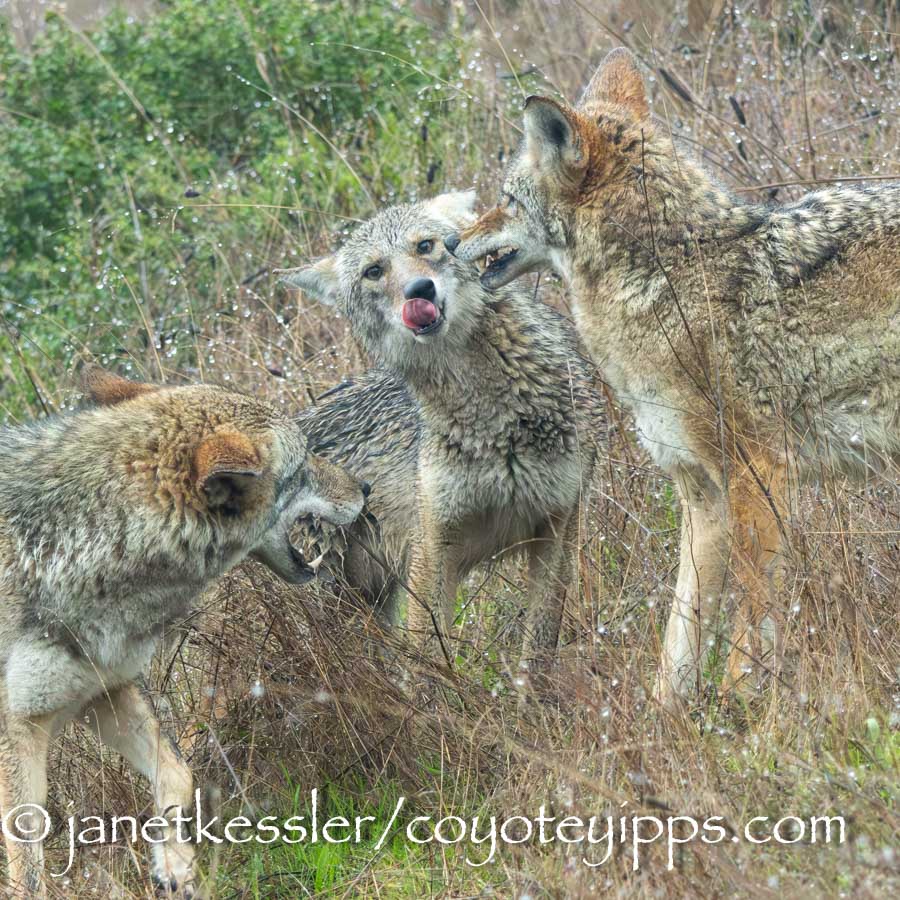
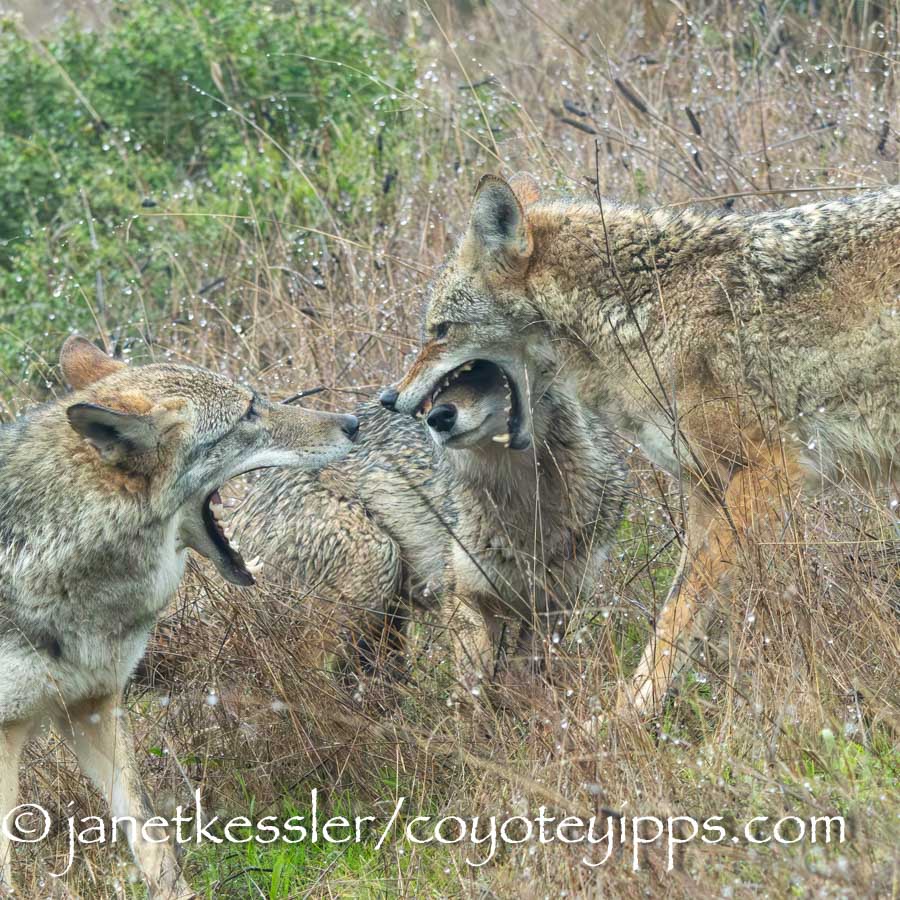
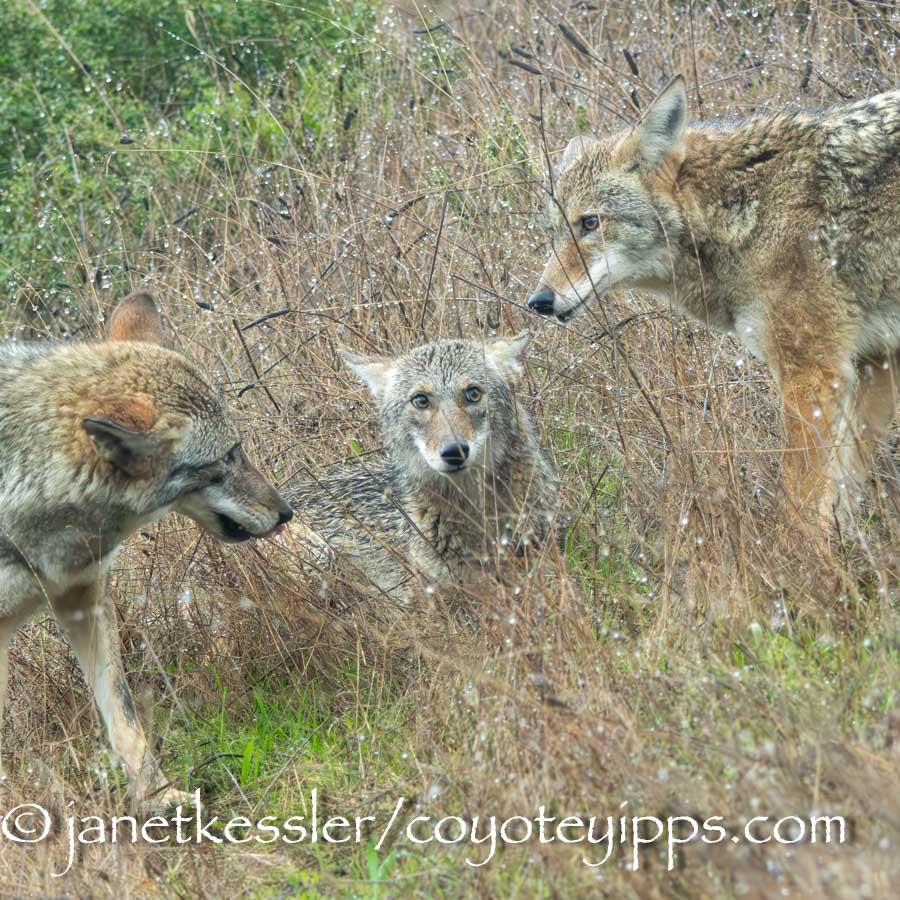
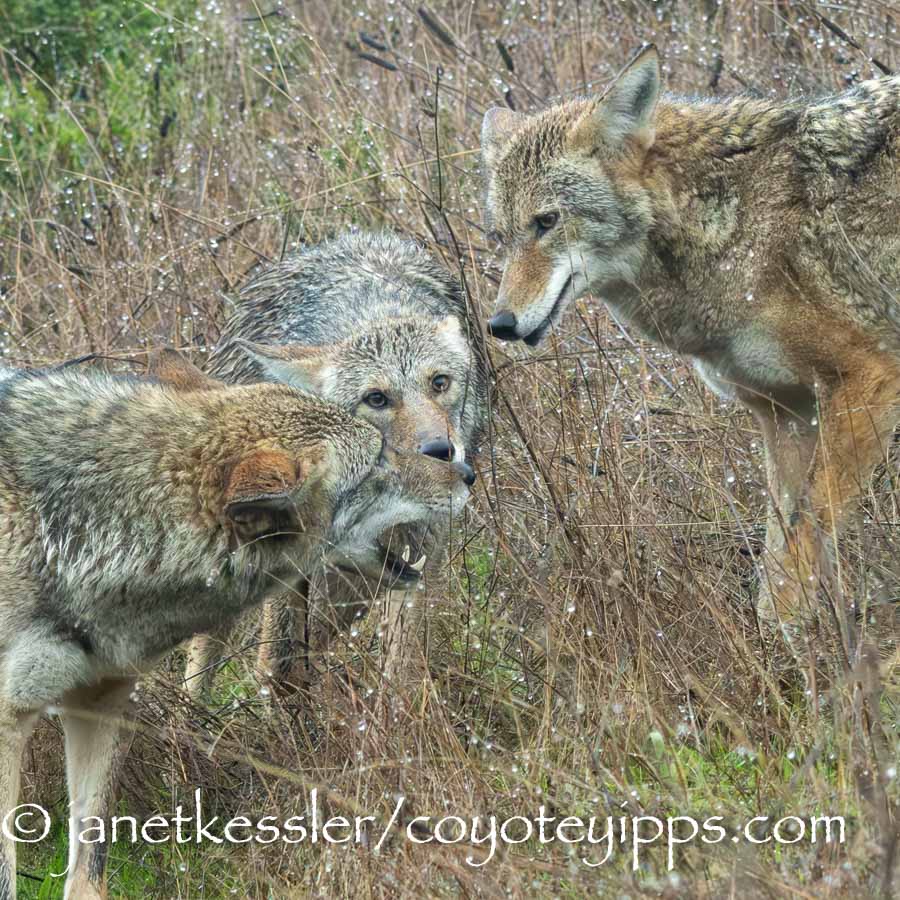
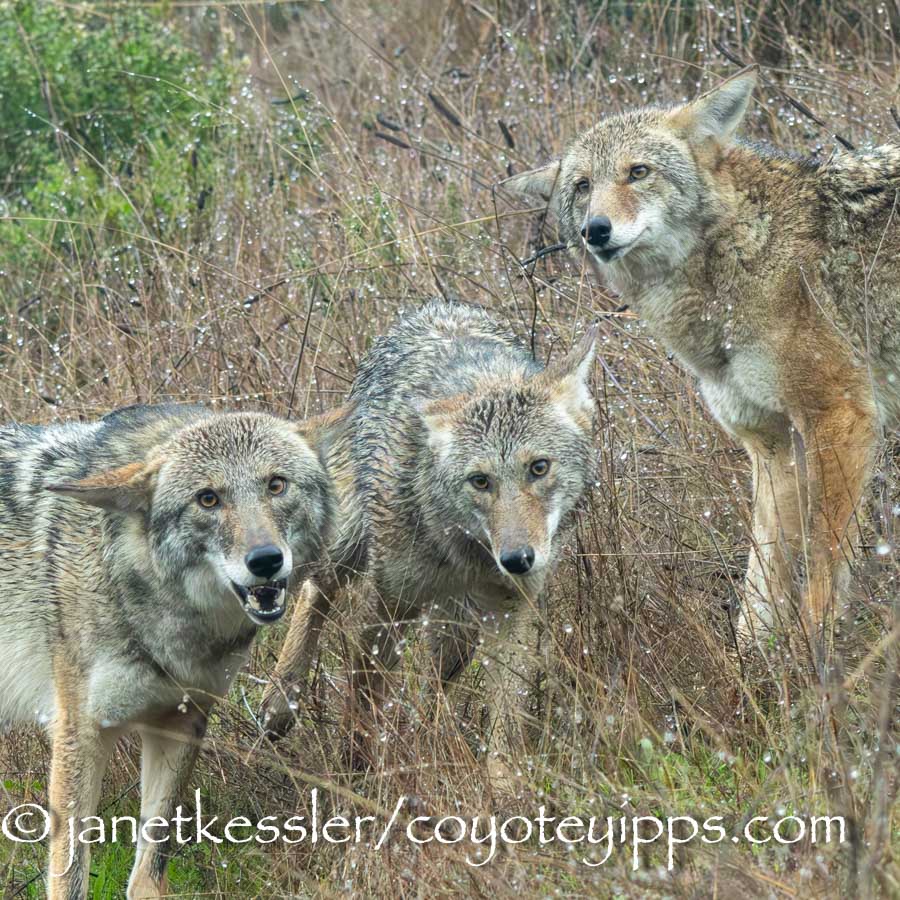
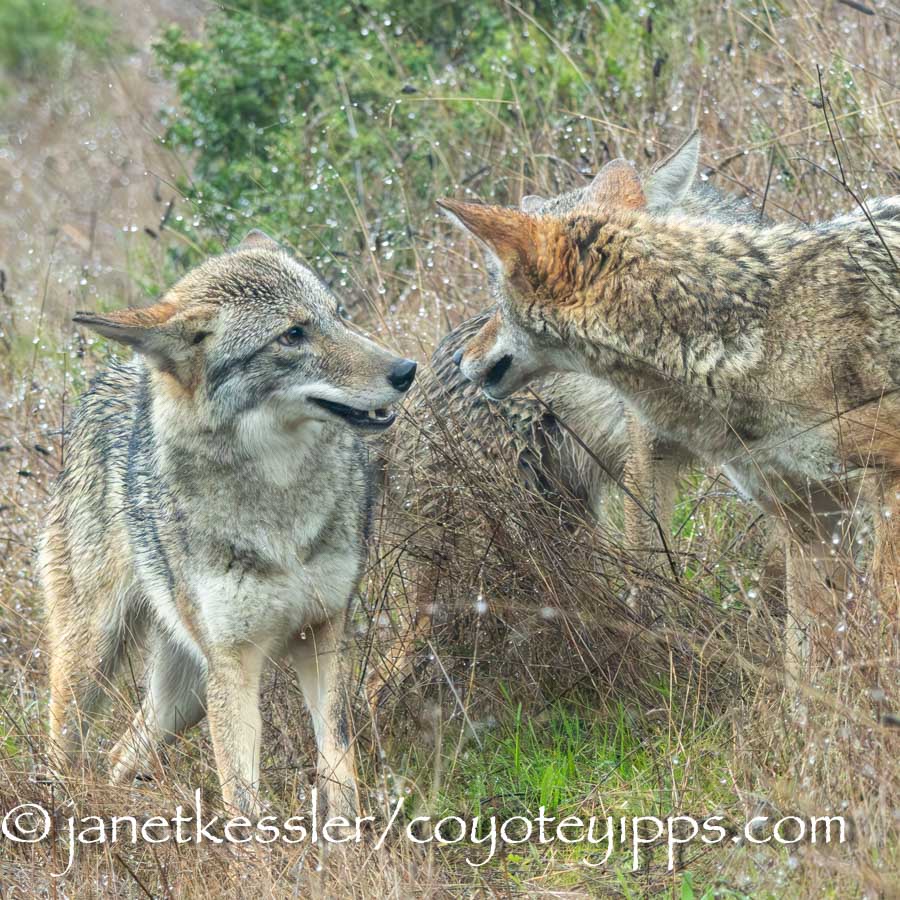
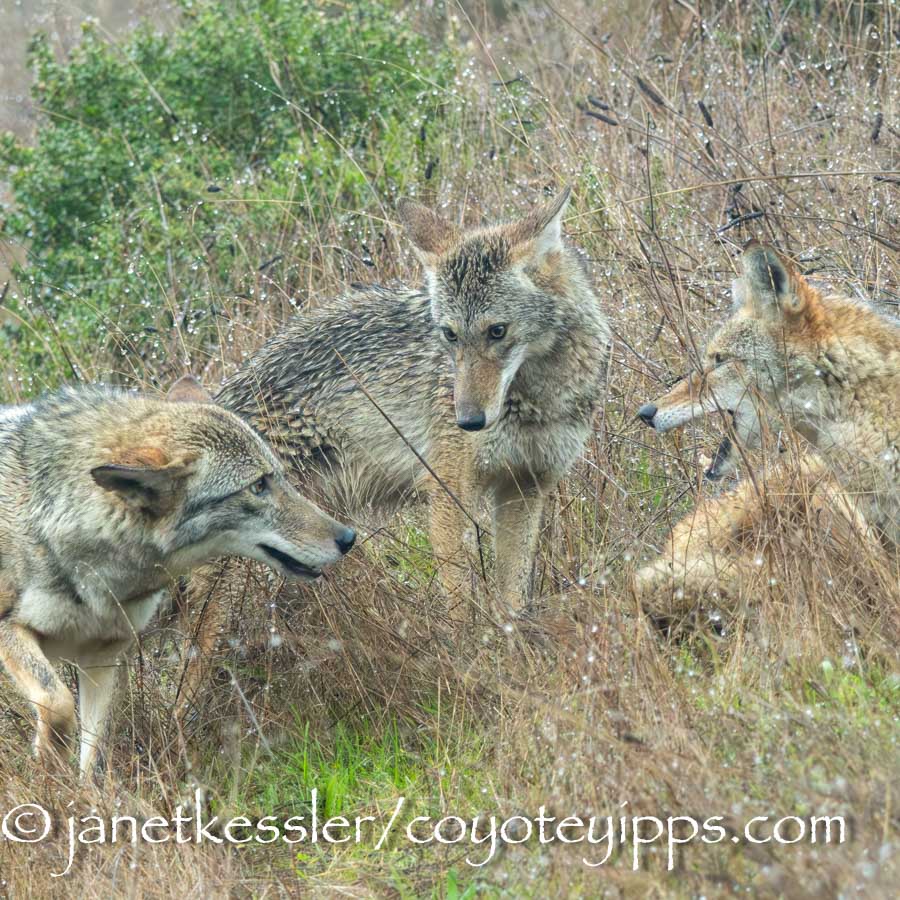
This series of photos shows Mom on the right letting Dad on the left know what she feels about what he’s doing. One of their youngsters is there, in the middle, looking on, and obviously anxious about how their “conversation” is going. Coyotes communicate constantly through eye-to-eye contact, facial expressions and body language. They are always aware of each other’s moods and intentions, and most of their communication is silent like this, though sometimes these might include quieter grunts and growls.
Top row: Dad had been lazily relaxing in the aftermath of a rain, when Mom approaches from the right. He’s taking it in stride, with his ears pulled back and focused eye-contact which shows he’s really listening. Notice how intently pup, in the middle, listens to it all and is upset about it’s intensity as shown by the anxiety in his face. He shows his nervousness by licking his lips.
Middle row left, pup is kept quiet and out of the conversation — or maybe even calmed down — by Mom who grabs his snout: this is usually a disciplinary move and reasserts her status and will over his. At this point, pup steps back but continues to be totally focused and absorbed in his parent’s “conversation”.
Bottom row: On the left is when they become aware of me: “Oh, hi over there!” But they’ve come to know me as a benign fixture in the distance, so their conversation resumes. It appears that Mom wanted Dad to get moving because she beckons him to follow and leads him away. Dad complies, and pup trotted along in back of them.
Another conversation that might interest you is this one: Coyote Conversation: An Example. These communications are very directed in their messages: they have a specific intent and planned outcome by the coyote delivering the message, and the message is understood absolutely by the recipient.
Besides eye-to-eye contact and all sorts of body language including physical arm pokes, coyotes also use smells to communicate: this is a whole different channel of communication that we “mere” humans do not have access to except in academic studies. In fact, in our terms, coyotes almost “see” with their noses. They produce and detect pheromones which convey all sorts of specific information, including territorial boundaries through urine scent marking, the presence of outsider coyotes including their meekness or boldness, reproductive status and gender, they can identify specific coyotes who have passed by even days beforehand, and they can smell injuries in each other. And, of course, much more.
In this photo here, it’s interesting to see how a parental communication to one youngster so thoroughly affects an onlooker pup. They, of course, can identify with the situation they are watching.
© All information and photos in my postings come from my own original and first-hand observations and documentation work which I am happy to share, with permission and with properly displayed credit: ©janetkessler/coyoteyipps.com.



Jan 29, 2024 @ 07:46:29
Fantastic photos! I SO commend you for sharing these photos and educating all of us about these fascinating creatures! (I have been following your posts for years. I’m 78 and enjoy observing and photographing coyotes in my backyard – through the window – and sharing images and info with my family, friends, and neighbors.)
Feb 07, 2024 @ 14:31:38
Thank you, Lana, for helping to spread positive information about your own local coyotes. They truly are fascinating! Janet